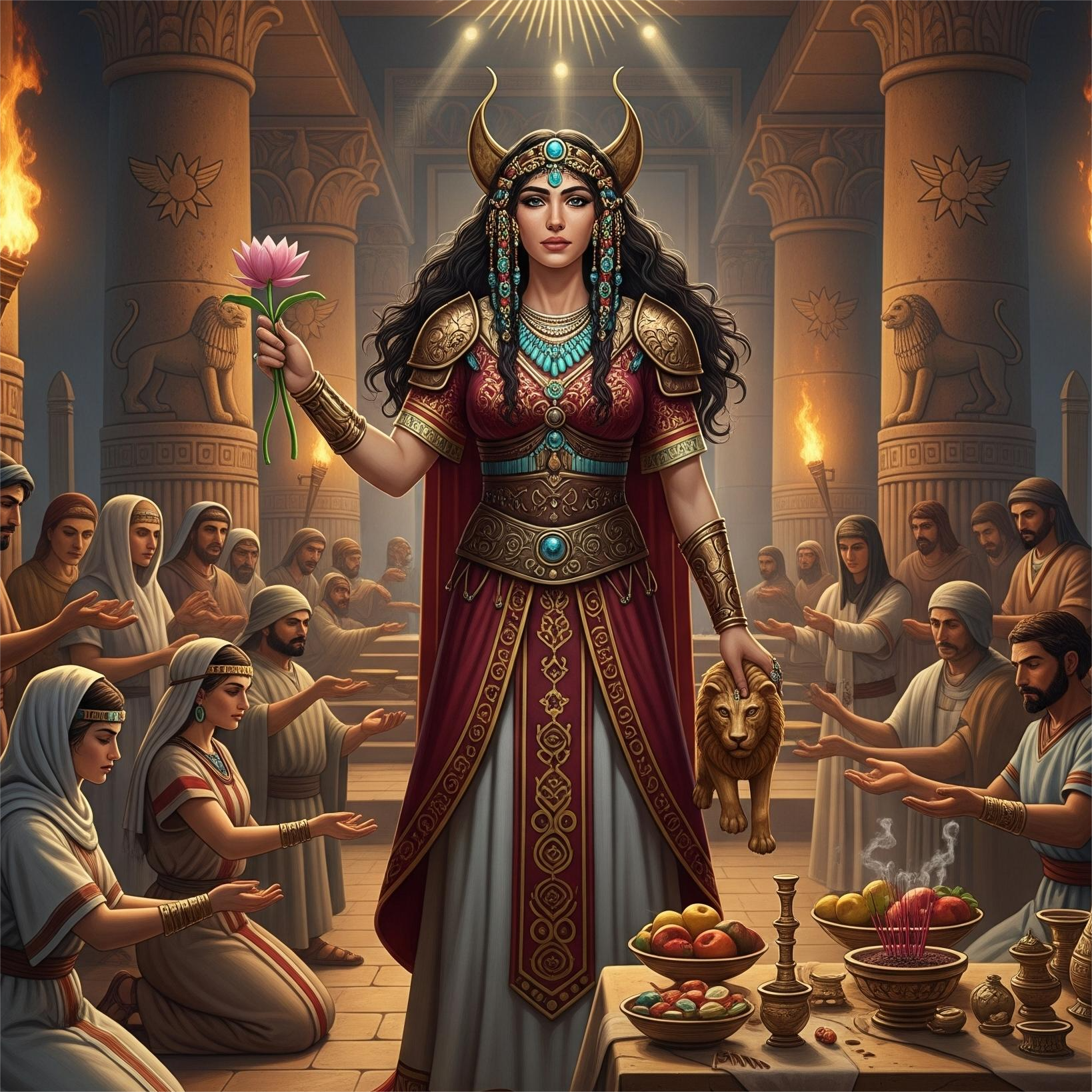Astarte, a prominent Near Eastern deity, embodies fertility, sexuality, and martial power. She is closely associated with Ishtar in Mesopotamia and Aphrodite in Greek culture.
Historical Context
Astarte was worshiped across the Levant and Phoenician territories from the Bronze Age onward. Temples and inscriptions indicate devotion by kings, merchants, and commoners alike.
Attributes and Symbols
She is often depicted with lions, doves, or stars, signifying her dual role in love and war. Rituals include offerings, dances, and invocations for fertility, protection, and victory in battle.
Influence
Astarte’s iconography and myths influenced later deities across cultures, demonstrating religious syncretism. Her worship reflects the interconnection between sexuality, power, and spirituality in ancient societies.






